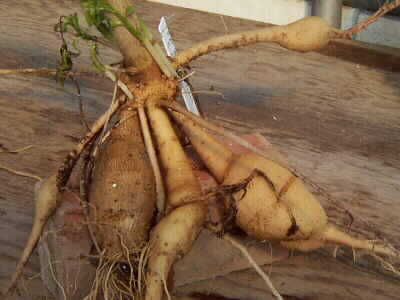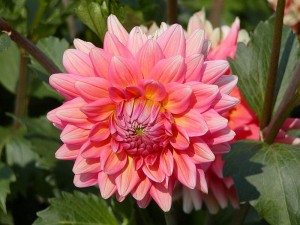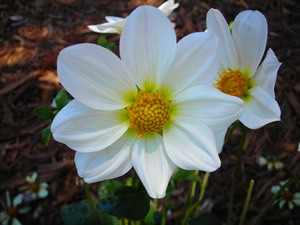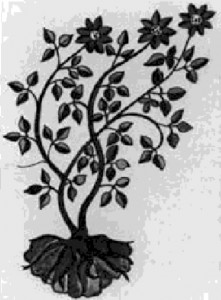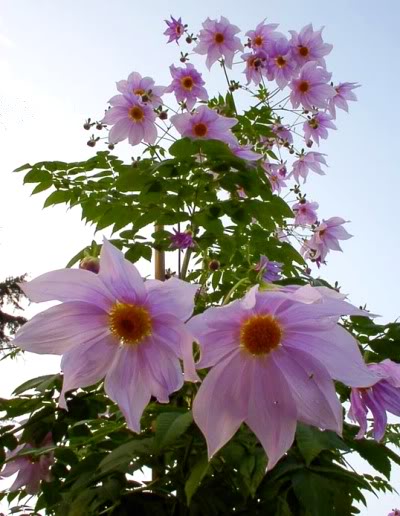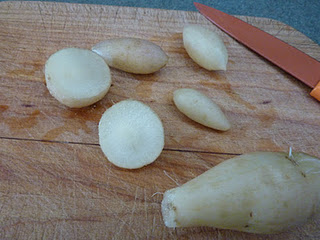Here’s the good news: At least one species of Dalhia has edible roots. Here’s the bad news, there are some 20,000 cultivars, maybe even thousands more. A short botany lesson to make things easier to understand:
The genus is like a family. Species are like brothers and sisters. With humans the breakdown stops there but with plants there’s another level down. If natures does it they are called varieties, a few changes but not enough to be a different species. If man does creates the next level down they are called cultivars. So within the Dahlia family there are 27 to 36 species — depending on who’s counting — and 20,000 or more cultivars or hybrids (that guess-timate is some 80-years old.) There are so many varieties because Dahlias have eight sets of homologous chromosomes rather than the usual two most plants have. Said another way, it is a natural hybrid. That gives plant breeders a lot more to work with thus a huge amount of different cultivars.
The edibility of the 20,000+ cultivars is for the most part unknown though that point might be moot and academic. Most of these cultivars are from crossing Dahlia coccinea and Dahlia pinnata, the latter is certainly edible. The three Dalhias most often mentioned for edibility are Dalhia pinnata, D. coccinea, and D. varibilis, the latter of which I have grown. That keeps my lawyer happy. However, I note that the botanist they are named for, Andreas Dahl, tried to popularize Dahlias by saying they were an alternative to potatoes. Dahlias as food had some success in France and the Mediterranean area but their slightly bitter flavor (then) kept them from going mainstream. However, their flavor can range from bland to bitter. The size of sweet potatoes they are still eaten in Mexico, their native range. They may indeed all be edible but I don’t know as there are so many of them. Perhaps some readers can add some insight in that area. At least one cultivar/hybrid, the Yellow Gem introduced in 1914, is edible and currently tops the list as “choice.”
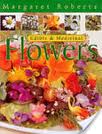 South African author Margaret Jones Roberts says on page 25 of her book “Edible and Medicinal Flowers” Spearhead Press, 2000, that “all the dahlia varieties are edible…” I don’t know that so if you experiment with Dahlias other than Dahlia pinnata or the Yellow Gem you are on your own. Sue her not me. I don’t think toxicology is a great issue I just personally don’t know about the multitude of other varieties.
South African author Margaret Jones Roberts says on page 25 of her book “Edible and Medicinal Flowers” Spearhead Press, 2000, that “all the dahlia varieties are edible…” I don’t know that so if you experiment with Dahlias other than Dahlia pinnata or the Yellow Gem you are on your own. Sue her not me. I don’t think toxicology is a great issue I just personally don’t know about the multitude of other varieties.
Dahlias are in the larger Sunflower family and are closely related to chrysanthemums, daisies, marigolds, dandelions and zinnias, all edible except for zinnias. Europeans knew of the flower from at least the early 1500s. It was included in an Aztec Herbal Medicine book, the Badianus Manuscript, in 1554. That manuscript, by the way, disappeared for nearly 400 years. Francisco Hernández de Tole, personal physician to Spain’s Phillip II, visited Mexico from 1570 to 1577 and noted two species, maybe three. Unfortunately Hernandez returned to Spain and died the following year, 1578. Part of his work was published in Spain in 1615 but the entire book did not get imprinted until 1651. Hernandez wrote:
“This plant, which the Quauhnahuascenses call ACOCOTLI and the Tepozthlanenses call CHICHIPATLI, is soft-tissued, its leaves similar to the leaves of Mountain Nard, but cut, some being fine cut, bearing at the ends of the stalks, which are nine inch, slender and rounded, stellate flowers, pale to reddening, with double roots of the size of acorns, ending in ever so many fibers, on the outside black, within white. This seems to belong to the order Ligusticum. It is found in the mountains of the Quauhnahuacenses. In taste the root is smelly, bitter, sharp; it is hot and dry in the third degree, one ounce eaten relieves stomach ache, helps windiness of the stomach, provokes urine, brings out sweat, drives out chill, strengthens a weak stomach against chill, resists the cholic, opens obstructions, reduces tumors.”
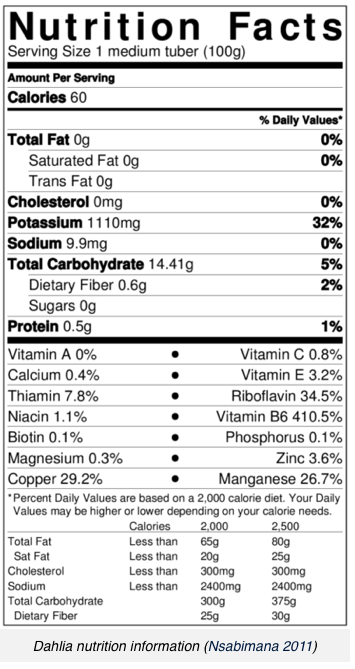
Dahlia Nutrition
I wonder if the good doctor was referring to a raw root or cooked? We shall never know. One hundred and fifty years later there are Dahlia seeds in all the important places in Europe and hybridization underway. From the area near Mexico City Dahlias have become a staple of flower gardens worldwide. D. pinnata is the national flower of Mexico. Oddly, Dahlias are also naturalized in North Carolina and Mississippi. They are also nutritious. As you can tell from the table at right they are very high in potassium (about four times that of a banana) and high in Vitamin B 6.
As mentioned the genus is named for Dahl who was an 18th century Swedish botanist. He was also a student of Linnaeus who invented the bionominal naming (two names) of plants. Dahlias, which for a long time were also called Georgias, were also the favorite of the first Mrs. Bonapart, Napoleon’s Princess Josephine. By the way Corsicans argue that Napoleon was Greek in that he came from a section of Corsica that was inhabited by diaspora Greeks from south of Sparta. In fact, I’ve been to the small village in southern Greece, Paomia, and seen the commemorative plaque. You can read about that here. While there I also met one of my father’s first (and last) cousins.
Plant genera can get iffy and for a while Dahlia zimpanii was in the Bidens genus, which if you are follower of these pages you also know as an edible, though usually only the leaves and blossoms.
Incidentally, Dahlia imperalis, which can grow to some 20 feet tall, is a good source of drinking water. Indeed, one reason why Dahlias are sensitive to winter cold is because they store a lot of water in their stems. Lastly, don’t forget to see recipes below.
Green Deane’s “Itemized” Plant Profile: Dahlias
IDENTIFICATION: Dahlia pinnata is a double blossom version that can grow to six or seven feet tall, deciduous, with simple leaves arranged alternately along the stems. They’re elliptic with serrate margins. The original was many-petaled and pink.
TIME OF YEAR: They are perennials from tubers and are usually a summer flower but can extend into the fall.
ENVIRONMENT: The best environment replicates Dahlias native environment, which is growing on volcanic soil near Mexico City. Well-drained land in full sun works well.
METHOD OF PREPARATION: Tubers, washed, peeled, washed again, then roasted or boiled or eaten raw. You can also just wash them and not peel them before cooking. Flower petals can be used in salads. A sweet syrup is made form the tubers and is made into a beverage or used for flavoring. Dahlia seeds are 31.9 percent protein and 17.8 percent fat but I don’t know if they are edible.
Dahlia Bread
The tubers should be just dug so there’s not a thick skin on them. Washed well. Peeling is optional.
Preheat oven to 350*
3 eggs
1 cup veg. oil
2 cups sugar
2 cups grated Dahlia tuber
2 tsp vanilla
3 cups flour
1 tsp salt
1/4 tsp. baking powder
1 tsp. soda
2+ tsp cinnamon
Beat eggs until light and foamy. Add oil, sugar, grated dahlia tuber and vanilla. Mix lightly but well. Sift dry ingredents together. Add to wet ingred. Mix only until blended. Put into greased loaf pans. Bake in 350* oven for 1 hour.
Dahlia Salad
3 large carrots, diced, preferably a mix of yellow and orange
1 pound dahlia tubers, pared and diced
1/2 pound fresh green string beans, cut into diamonds
1/2 cup virgin olive oil
3 tbsp vinegar (tarragon, chervil or dill vinegar recommended)
Mayonnaise to taste
Salt and pepper to taste
1 hard boiled egg, quartered
Mixed herbs (dill, parsley, chives), chopped
Steam the carrots, Dahlia tubers and beans for 5 minutes or until still slightly “al dente.” Put the vegetables in a large mixing bowl and add the oil and vinegar while still hot. Let the vegetables cool, and then add mayonnaise to taste so it coats all the vegetables evenly. Transfer the vegetable mixture to a serving bowl and garnish with the egg and chopped herbs. Serve slightly chilled or at room temperature. Serves 4 to 6.

